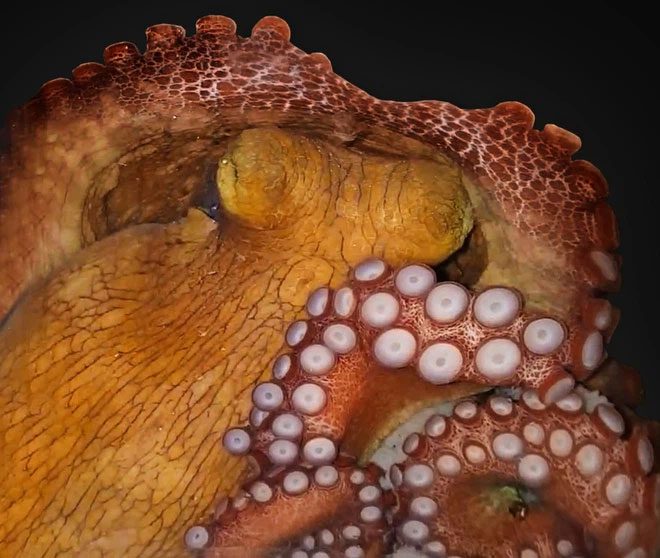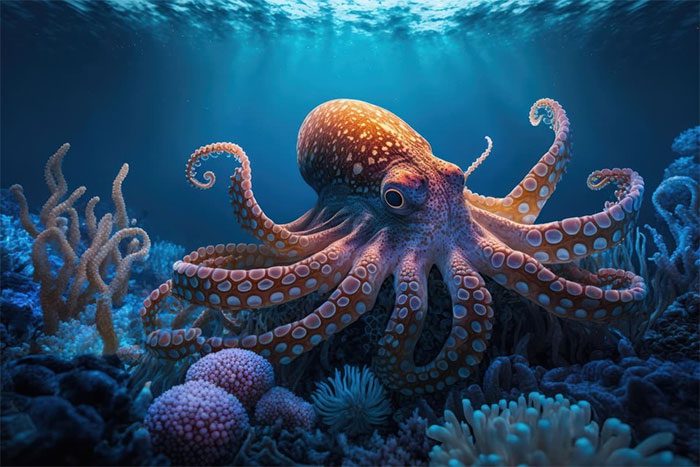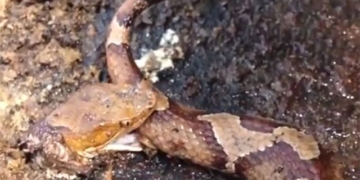Octopuses Can Change Color While Sleeping, Likely Influenced by Dreams
At the Federal University of Rio Grande do Norte, neuroscientist Sidarta Ribeiro and his team discovered that octopus sleep is divided into active and passive phases. After observing four common octopuses (scientific name: Octopus vulgaris) for several days, the research team collected over 180 hours of video footage and made some noteworthy conclusions.
According to Ribeiro, octopuses spend about half of their daytime sleeping. “In quiet sleep, they lie still for extended periods—very quietly, with their eyes tightly shut—and they breathe very softly and steadily.”

What is this octopus dreaming about?
Every 30-40 minutes, this passive sleep is interrupted by a short active sleep phase lasting 1-2 minutes. During this time, the octopus’s body changes color and texture. Its eyes and tentacles exhibit movement, and the suckers contract continuously. “Clearly, this is a very active sleep phase,” Ribeiro noted.
The research team tested whether the octopus was indeed sleeping by playing videos related to crabs—its favorite meal. “When we stimulated the animal with images or vibrations, it did not react at all,” said neuroscientist Ribeiro, adding that this behavior is completely opposite to that of an awake octopus. “If they do dream, then they could be dreaming for up to a minute.”
This active sleep period, although short, is distinctly separate from passive sleep; while dreaming, the octopus’s skin darkens, and it moves slightly. “In about 40 seconds, they suddenly change color and surface structure. The eyes of the octopus move,” said Sylvia Medeiros, a graduate student involved in the research, in a press interview. This unusual behavior occurs approximately every 30-40 minutes.
Medeiros also pointed out that the dreams of octopuses (if they exist) cannot be too complex or meaningful, given that the active sleep phase is very short. Octopuses have problem-solving abilities similar to many other species, including primates, suggesting that dreams could help octopuses enhance their brain capabilities and tackle challenges better.
Carrie Albertin, an octopus researcher at the Marine Biological Laboratory in Massachusetts, noted that octopuses frequently remain still in their dens, sleeping regularly and possibly even dreaming.

EEG shows octopuses have brain waves similar to humans during sleep. (Image: Depositphotos).
“I think when you observe these animals, it’s hard to deny that something is happening, but it’s important to identify them and conduct research so scientists can clearly delineate the concepts involved,” Albertin remarked. “That’s exactly what [the Brazilian research team] has accomplished.”
She believes that the newly published research is a solid first step in clearly defining the different sleep stages of octopuses.
Previously, scientific evidence indicated that the common ancestor of octopuses and humans diverged over 600 million years of evolution. Most scientists believe that their behaviors are very different from those of humans.
“All animals share a common sleep cycle, including simple creatures like jellyfish or fruit flies. Only vertebrates have two sleep stages: NREM and REM,” said scientist Sam Reiter.
Thus, the findings regarding octopus sleep open up a new realm of knowledge, demonstrating that the sleep cycle of humans is quite similar to that of octopuses.
“Different species, despite their differences and distances, can evolve a two-phase sleep cycle independently, like octopuses—animals with a brain structure entirely different from vertebrates,” said Leenoy Meshulam, a physicist at Washington University, to New Atlas.


















































